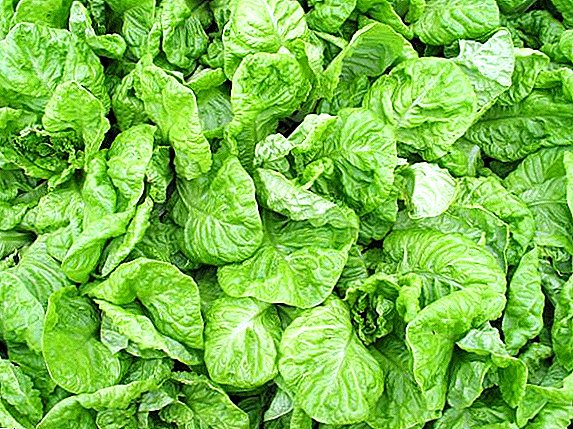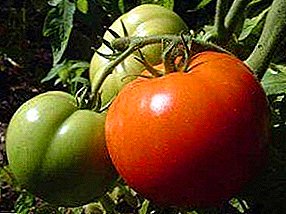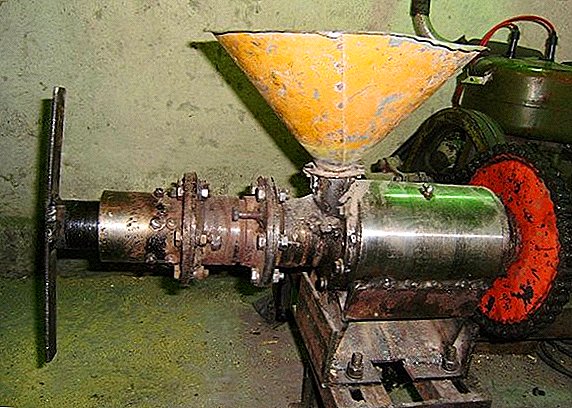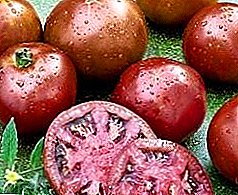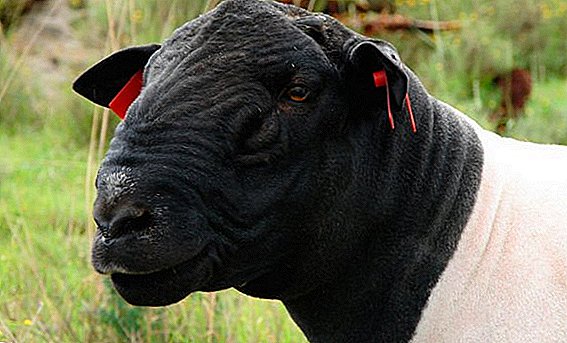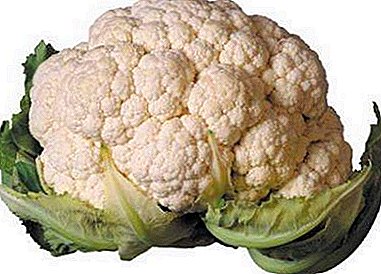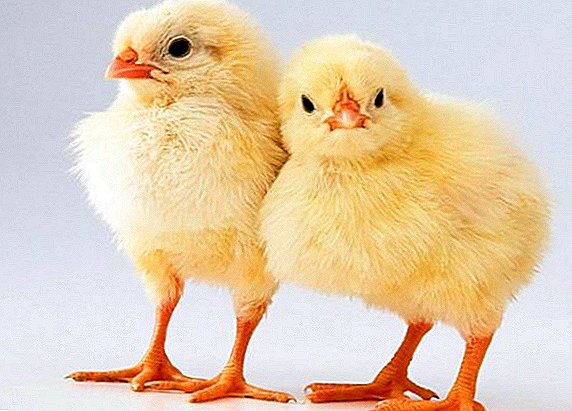 Carrot - a biennial (rarely one- and perennial) plant from the Umbrella family, forming in the first year of life a rosette of leaves and roots, and in the second - a seed bush and seeds. It is distributed throughout the world, including in the countries of the Mediterranean region, Africa, Australia. In agriculture, carrots are sown most often.
Carrot - a biennial (rarely one- and perennial) plant from the Umbrella family, forming in the first year of life a rosette of leaves and roots, and in the second - a seed bush and seeds. It is distributed throughout the world, including in the countries of the Mediterranean region, Africa, Australia. In agriculture, carrots are sown most often.
Gallic nematode
This genus of worms from the Meloydogin family is able to multiply and develop outside of greenhouses at moderate temperatures. These carrot pests have a detrimental effect on agricultural plantings in open soil.
It reproduces bipolarly and parthenogenetically, either by amfixis. Several generations can develop over the course of a year, but if this development takes place in conditions of closed soil, it happens all year round.
 In order to combat pest, you must adhere to the following agricultural techniques: (for closed ground) to comply with measures that prevent the penetration of nematodes into the ground with the material for planting, soil or inventory, be sure to replace the contaminated soil; open ground requires adherence to a crop rotation system with nematode-resistant crops (cereals, cabbage, garlic), as well as knowledge of how to water the bed from pests.
In order to combat pest, you must adhere to the following agricultural techniques: (for closed ground) to comply with measures that prevent the penetration of nematodes into the ground with the material for planting, soil or inventory, be sure to replace the contaminated soil; open ground requires adherence to a crop rotation system with nematode-resistant crops (cereals, cabbage, garlic), as well as knowledge of how to water the bed from pests.
Mechanical methods of struggle include steam disinfection of soil with a temperature of 100 ° C at a depth of 30 cm and freezing of the soil in winter. You can also use chemical methods, treating the soil with Avermectins nematocides, pickling the soil, tools and materials.
Bare slugs
They are particularly active at night and in cloudy weather. Winter is experienced in the egg stage. Very dangerous pests of carrots, because of which the fight against them should begin as soon as possible.Constant cleaning of the soil from weeds is one of the best methods of struggle. Mowed plants must be removed from the plots.
 Also, drainage of roadside trenches will not be unnecessary. The area affected by bare slugs must be treated with 30% lime mortar, adding ash or superphosphate to it with the calculation of 250-300 kg per hectare. Carrots should be sprayed with 10% saline solution, performing the procedure at night, with heightened activity of slugs.
Also, drainage of roadside trenches will not be unnecessary. The area affected by bare slugs must be treated with 30% lime mortar, adding ash or superphosphate to it with the calculation of 250-300 kg per hectare. Carrots should be sprayed with 10% saline solution, performing the procedure at night, with heightened activity of slugs.
Important! Mulching the soil with coniferous sawdust or needles, or with freshly cut grass, will protect carrots from pests, retain moisture, and provide the plant with nutrition.
Medvedka
Very harmful large insect that lies in her lifestyle. Making their way through a large number of passages in the upper layer of the soil, the larvae and the imago eat the seeds that started to germinate, gnaw off some of the roots and the underground zones of the stems, seedlings, eat carrot roots. After such executions, the plants either slow down growth and development, or die immediately, significantly reducing the total yield.
 Rows of carrots must be deeply loosened, which will contribute to the removal of nests and soil paths of bears. In the autumn, it is necessary to dig up special trapping pits for laying manure 30-40 cm deep. In winter, the concentration of larvae occurs in them, which should be scattered during the first frost (they will die quickly in the cold).
Rows of carrots must be deeply loosened, which will contribute to the removal of nests and soil paths of bears. In the autumn, it is necessary to dig up special trapping pits for laying manure 30-40 cm deep. In winter, the concentration of larvae occurs in them, which should be scattered during the first frost (they will die quickly in the cold).
Carrot listobloshka
The coagulation of leaves, the texture of which becomes terry - a sure sign of infection of the carrot leafs. Leaves slow growth, hardening and drying of root crops occur. The insect has a delicate green tint, transparent wings, long fluffy antennae and hind legs, with the help of which it jumps.
For the year there is one generation. The females after spending the winter on the branches of the pines or else the wild carrot itself lay white eggs, which eventually turn yellow. The larvae that have emerged from the eggs consume carrot juice as food.
 Means to combat the carrot leaflet is the elimination of plantings of plants, as well as the disconnection of the garden from coniferous trees. In addition, crops should be treated with tobacco infusion (1 kg of tobacco waste is diluted in a bucket of hot water). Before the procedure of sprinkling the infusion must be filtered and add 30 g of soap to it. Having chosen the chemical method of struggle, it is necessary to use Actellic, Tsimbush, Sumicidin and other preparations. Spraying is stopped a month before the alleged adoption of carrots in food.
Means to combat the carrot leaflet is the elimination of plantings of plants, as well as the disconnection of the garden from coniferous trees. In addition, crops should be treated with tobacco infusion (1 kg of tobacco waste is diluted in a bucket of hot water). Before the procedure of sprinkling the infusion must be filtered and add 30 g of soap to it. Having chosen the chemical method of struggle, it is necessary to use Actellic, Tsimbush, Sumicidin and other preparations. Spraying is stopped a month before the alleged adoption of carrots in food.
Carrot moth
The front wings of the moth are dark brown, the back ones are gray-pink, the head and chest are of a light yellow color. Carrot moth reaches 18 mm in size and lays eggs on root inflorescences. Caterpillars emerging from eggs can reach 13 mm, they have a black head and a brownish-pink body, along which white bumps can be found.
Insect caterpillars produce webs, with which they entangle umbrellas and inflorescences of carrots and damage their structure. In August, the second generation of moth appears. The use of lepidocide, entobacterin, herbal medicine in the processing of inflorescence, which is budded - the first step to victory over the carrot moth. Removal of umbrella weeds and uprooting of plant residues has a beneficial effect. Early harvesting of a plant, followed by threshing, is also one of the effective prevention measures.
Carrot fly
 This insect is very detrimental to the crop of carrots. It is a fly with a diameter of 5 mm, with a shiny body and metallic highlights, a head of a reddish-brown shade and transparent wings. Flies out at the end of May. Carrot fly is especially active in the evening and at night. As soon as the carrot has some young leaves, the female of the pest lays about 100 eggs at the base of the plant.
This insect is very detrimental to the crop of carrots. It is a fly with a diameter of 5 mm, with a shiny body and metallic highlights, a head of a reddish-brown shade and transparent wings. Flies out at the end of May. Carrot fly is especially active in the evening and at night. As soon as the carrot has some young leaves, the female of the pest lays about 100 eggs at the base of the plant.
The larvae reach 7 mm, their little body is yellow. It is they who gnaw the flesh of carrots and the curved aisles of the root. A carrot struck by a fly becomes tough, acquires an ugly shape and an unpleasant taste. In the holes formed by the parasite, rot easily gets, as a result of which vegetables can neither be preserved nor eaten. Gnawing the cuttings of leaves, the larvae contribute to the withering of the tops. Carrot leaves instead of green become reddish-purple. Therefore, gardeners should know how to deal with carrot fly folk remedies.
The best way to protect against carrot flies is prevention. The ground that has already been affected by the pest in previous years should be covered. The opening of the site occurs only for irrigation and nutrition. In addition, it is worth warming the seeds before sowing - this increases endurance to the fly. It is recommended to loosen the soil in the middle of May, spuding the heads and thickening the space around the stems.
 Diseased plants must be removed, and immediately taking the tops of the garden to avoid attracting insects with its sharp aroma. Carrot fly does not tolerate insecticides. But they need to be used when absolutely necessary, since there is a more gentle scaring of carrot flies. For example, you can plant dill and onion in close proximity with a bed of carrots, and sprinkle ashes and shag dust on the rows between the beds, or bury a healthy tomato topper in the garden. After harvesting it is necessary to dig up the soil thoroughly. An effective drug for carrot flies - pesticide "Decis"
Diseased plants must be removed, and immediately taking the tops of the garden to avoid attracting insects with its sharp aroma. Carrot fly does not tolerate insecticides. But they need to be used when absolutely necessary, since there is a more gentle scaring of carrot flies. For example, you can plant dill and onion in close proximity with a bed of carrots, and sprinkle ashes and shag dust on the rows between the beds, or bury a healthy tomato topper in the garden. After harvesting it is necessary to dig up the soil thoroughly. An effective drug for carrot flies - pesticide "Decis"
Wireworm
A wireworm is called a yellow worm with a hard body texture, up to 3 cm long.
Did you know? The beetle got its name due to the fact that when you try to lay it on its back, it quickly turns over and makes a loud click.
The lifetime of one generation is about 5 years. The pest forms passages in the roots, subjecting the plant to rotting. In the ground it moves quite easily, and the soil moisture is 50% at an air temperature of 20 - ideal conditions for the development of wireworm larvae. High humidity encourages them to move to the surface, while the drying of the soil, by contrast, lowers the larvae to a depth of about 1 m.
 Egg laying lasts from May to July. The length of young larvae in the first year of life is approximately 7 mm. Pupation occurs at the end of July. The following spring, beetles appear from the overwintered larvae. Fertilizers containing ammonia give a good result in the fight against wireworm. Liming has a good effect on soil condition.
Egg laying lasts from May to July. The length of young larvae in the first year of life is approximately 7 mm. Pupation occurs at the end of July. The following spring, beetles appear from the overwintered larvae. Fertilizers containing ammonia give a good result in the fight against wireworm. Liming has a good effect on soil condition.
In addition, before planting in the ground, the treatment of seeds with insecticides is obligatory, and a scrupulous loosening of the soil and weeding (in particular, creeping couch grass), together with the enticement of birds for hatching larvae, will help protect plants from pest infestation. Often gardeners are interested in processing carrots from wireworm. Chemicals Bazudin and Aktar will be appropriate. With a deep digging area is to add ammonium sulfate or ammonium nitrate in a ratio of 30 g per 1 m².
Winter scoop
It gnaws the stalks of carrot leaves and speeds up the death of the plant and the winter scoop, which disfigures the root crop, as a result of which you will get spoiled carrots with poor taste. The wingspan of the winter scoop reaches 4.5 cm, the body is 5 cm long, the color of the wings is gray-brown in the back and white in the front, a dark stripe runs along the back. It pupates in April, adult butterflies come out in June. One female winter shovel for a season gives rise to about 2 thousand caterpillars.
 This pest is afraid of the smell of chamomile and burdock, so it is useful to spray carrot tops, decoction of these plants. Early sowing and optimal density of carrots reduce the risks of a winter shovel. During the debugging of eggs, it will not be superfluous to produce a trichogram in a proportion of 35,000 copies per 1 hectare of vegetable garden, with an interval of several days. An excellent tool is abundant irrigation. Biological agents that will fit: Decis Politrin et al. Processing takes place in the evening.
This pest is afraid of the smell of chamomile and burdock, so it is useful to spray carrot tops, decoction of these plants. Early sowing and optimal density of carrots reduce the risks of a winter shovel. During the debugging of eggs, it will not be superfluous to produce a trichogram in a proportion of 35,000 copies per 1 hectare of vegetable garden, with an interval of several days. An excellent tool is abundant irrigation. Biological agents that will fit: Decis Politrin et al. Processing takes place in the evening.
Aphid
Carrot aphid
Pests choose the lower part of the leaf for life, simultaneously damage it and drink the juice. The leaves twist, their growth slows down, the carrot harvest significantly decreases. The length of the aphid is 1.7 mm and can be of two generations, represented by winged and wingless individuals, which are born from eggs, wintered on carrots (usually they have a green body and brown head, although after 2 generations, winged individuals with a black head and turquoise belly). Winged representatives - fly to the sowed beds of cultivated carrots and are placed at the base of the petioles in large groups.
In this case wet leaves should be covered with ash (or a mixture of ash and tobacco dust in equal shares), loosening the soil 20 minutes after the shedding procedure. Another way is sprinkle carrots with fermented broth of any herb. You should also closely observe the destruction of weeds and their harvesting from vegetable gardens, alternating the sowing of various vegetables and making intensive autumn digging.
Did you know? Scare away carrot aphids marigolds planted on both sides of the garden.
Hawthorn aphid
 A small insect of green, brown or black color. Overwinters on the first hawthorn plant, in the middle of spring pulling out its foliar juice and forming red tubercles on the underside of the leaves. In May, it changes its dislocation - settles on carrot leaf stalks and roots, where it lives, quietly breeding until the autumn period.
A small insect of green, brown or black color. Overwinters on the first hawthorn plant, in the middle of spring pulling out its foliar juice and forming red tubercles on the underside of the leaves. In May, it changes its dislocation - settles on carrot leaf stalks and roots, where it lives, quietly breeding until the autumn period.
Infected plants slow down growth, and at the beginning of autumn individuals again find themselves on hawthorn, where females lay eggs for wintering. For prevention, it is advisable to plant carrots away from hawthorn plantations and comply with agricultural practices in the process of growing. Careful spraying of plants with pyrethroids and organophosphorus compounds or biopesticides will also be useful.
Willow carrot aphid
Leaves and pests affected by the pest twist into balls, and the accumulation of aphids occurs at the root collar and leaf stalks. The result is a deformation of carrot root vegetables, their decrease in size. Close-lying willows contribute to the appearance of aphids, since it is on them that the female pest lays and lays eggs. The best means of struggle is spraying with neonicotinoids.
Rodents
 Besides the problem with insects, the hosts of carrots can face the problem of rodents, which also spoil the roots (rats, moles and shrews). You can fight them with the help of traps and scarers. For mice and rats, it is the smell of elderberry, mint and anise, for moles and shrews - onions and camphor, or sound vibrations. However, if you notice that small animals gnawed carrots, then most likely you will not be able to do without special chemicals to destroy them.
Besides the problem with insects, the hosts of carrots can face the problem of rodents, which also spoil the roots (rats, moles and shrews). You can fight them with the help of traps and scarers. For mice and rats, it is the smell of elderberry, mint and anise, for moles and shrews - onions and camphor, or sound vibrations. However, if you notice that small animals gnawed carrots, then most likely you will not be able to do without special chemicals to destroy them.
Pest preventive measures
It is necessary to plan the location of carrot gardens near the onion beds, or combine their planting, alternating a row of carrots with a row of onions.
Important! Carrot fly hates onion smell, and therefore, the likelihood of its appearance on the carrot beds will decrease.
In addition, it is important to observe the norms of crop rotation, constantly move carrot beds, monitor the culture that preceded the carrots in the selected area.
The use of organic fertilizers - the main preventive measure that increases the resistance of carrots to diseases and pests. It is important to remember that mineral supplements change the chemical composition of leaves and root crops, increasing the content of glucose and amino acids in them. It attracts insects and rodents, and therefore, it is better to refuse them
Timely harvesting is also very important, because by leaving ripe roots in the ground, you increase the risk of pest damage.


